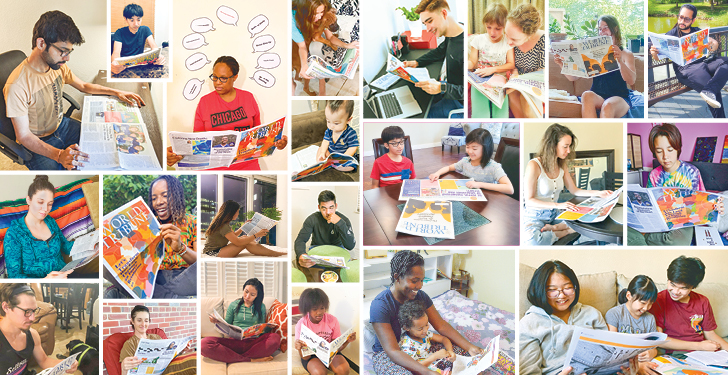Napoleon declared that it was not Voltaire or Rousseau who brought an end to the old regime; newspapers did it. Victor Hugo said that without newspapers, the French Revolution would never have occurred. In any age where people come to the fore, you will find newspapers providing the impetus.[1]—Ikeda Sensei
On Saturday, Aug. 15, 1964, the World Tribune printed its first edition in East Los Angeles—a four-page tabloid-sized newspaper with the first three pages in English and the fourth in Japanese.
The U.S. was still reeling from the assassination of U.S. President John F. Kennedy, while a month earlier, the U.S. Civil Rights Act of 1964 had been passed. A week before its publication, the U.S. Congress authorized the war against Vietnam.
In an era of great change, the newspaper communicated to the English-speaking world the profound ideals of Nichiren Buddhism rooted in the dignity of life, as well as the significance of the Soka Gakkai’s grassroots movement for peace in which all people could take equal part.
Ikeda Sensei gave the newspaper its name—and by extension, its mission— that same year, in May 1964, while flying from Mumbai to New Delhi in India.
World, he explained, symbolizes the determination to spread peace and hope to all humanity, while Tribune, which originates from the ancient Roman guardians of the people, signifies using our voices of truth and justice to protect ordinary people.
“The fact that the decision to name the paper World Tribune has been made in the skies over India, a land so deeply connected to Shakyamuni, is very significant,” Sensei said at that time. “It means that Buddhism is going to spread further throughout the world.”[2]
Just four years earlier, in October 1960, Sensei had initiated his global travels for peace from the land of America to make Buddhism accessible beyond the borders of Japan. In those early days of the kosen-rufu movement in the U.S., the pioneer members were mostly Japanese women married to U.S. servicemen struggling with isolation in a new land.
Sensei awakened them to their profound mission as Bodhisattvas of the Earth, and with a renewed sense of purpose, these pioneers, most of whom spoke little English, introduced Nichiren Buddhism to the West.
In a 2014 interview with the World Tribune, Kazue Elliot recalled how, in those days, it took three people to invite someone to a Buddhist discussion meeting. The first person said something like “We are American Soka Gakkai members. With Nam- myoho-renge-kyo, you can get happiness.” The second person held up the World Tribune. The last person then added, “You try?”
Fifty-six years after its birth, the newspaper—for which Sensei in 2015 presented the motto “Voice of Courage and Hope”—continues to serve as a lifeline and friend in faith, a personal letter from Sensei. Through its pages, members have learned how to correctly practice Nichiren Buddhism, how to transform their lives and communities, and how to impart hope to others.
In his message marking the newspaper’s 50th anniversary, Sensei expressed his deep wish for the great advancement of the SGI-USA, as a model for the world, “and my hope that toward its 60th and 70th anniversaries [in 2024 and 2034], the World Tribune will create a history of progress while brightly illuminating the future with the beautiful light of peace and hope” (Sept 5, 2014, World Tribune, p. 1).
—Prepared by the World Tribune staff
You are reading {{ meterCount }} of {{ meterMax }} free premium articles

